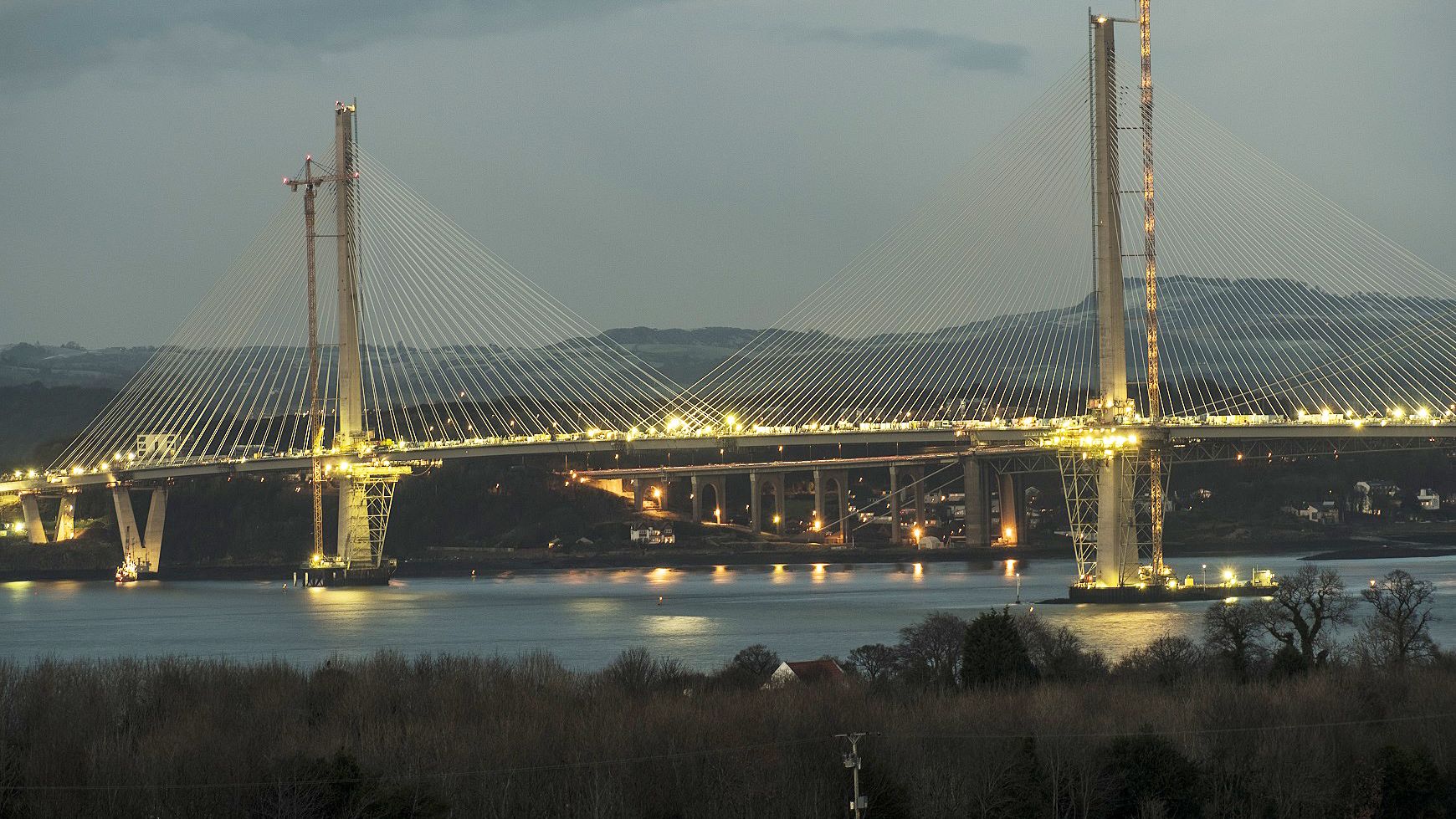The Queensferry Crossing, which spans the Firth of Forth in eastern Scotland, became the longest three-tower, cable-stayed bridge in the world upon its completion in May 2017. The 1.7-mile, £790 million structure (total project value £1.35 billion) will make foran awe-inspiring sight for the thousands of motorists who are anticipated to cross its deck on a daily basis or those who simply like to stand and gaze at breath-taking constructional feats. Queen Elizabeth II officially opened the bridge on 4 September 2017.
The cementitious grout Sika® Armorex L2 High Flow did the job
Queensferry Crossing’s three towers will stand up to 210 m above high tide. In addition to the main towers – and ensuring that this mammoth monument can fulfil its duty as a speedy travel link between Lothian and Fife – are a total of 10 concrete piers. Some emerging from the water, others from land, these piers support the crossing’s north and south approach viaducts. Acting as a middle material between the crossing’s deck and the piers, and absorbing the gargantuan pressure of both, are PTFE bearing pads.
Absolutely critical to the crossing’s design, these components’ creation required a substance designed to be even tougher than concrete. The consultant engineers for the Forth Crossing Bridge Constructors (FCBC) consortium, which is responsible for Queensferry Crossing’s construction for client Transport Scotland along with its connecting roads, specified Sika® Armorex L2 HighFlow grout between the PTFE bearing pads and the top of the piers.
Sika® Armorex L2 HighFlow, a one-component cementitious grout, it is a strong material with a proven track record for precision, high-performance grouting beneath all types of structural steelwork. Before installation and with the crossing’s stability literally resting on the grout-based, bridge bearing pads beneath it, structural engineers carried out a testing program on each batch of Sika® Armorex L2 High Flow.
Analyzing huge volumes of cementitious grout to identify potential failures proved extremely time-consuming, and presented the biggest challenge to engineers when it came to installing the bridge-bearing pads and supporting grout. It was a vital element of the installation process, however, as safety on a project of this size and profile was of the highest priority. As well as its high-strength and durability, the sustainability of Sika® Armorex L2 High Flow makes it an attractive proposition for specifiers on large-scale building projects. It is free of toxins such as chloride, thus eliminating a potential threat to wildlife in areas of rural or waterside construction.
Technological excellence
The resulting structure will dwarf the existing Forth Road Bridge in height. But while we acknowledge the magnificence of the crossing and the technological excellence that will eventually bring this unique and much-needed transport courier to life, let us not forget the building materials that hold it together, helping cement its place in Scotland’s infrastructural history.
Find out more
Visit Sika Uk
Watch BBC the Queen opening ceremonies of Queensferry Crossing.
Be one of the first crossing the bridge with The Courier

